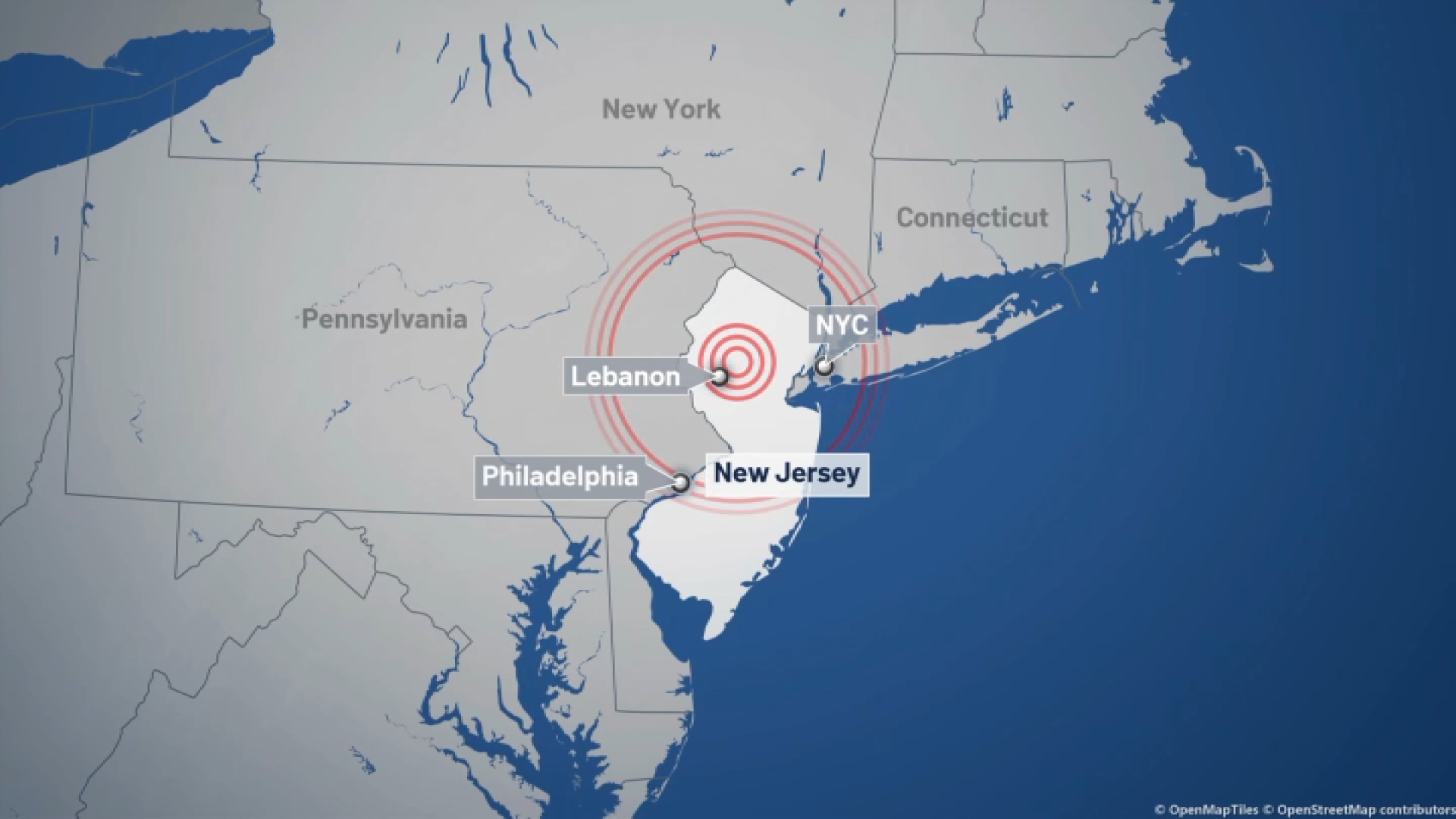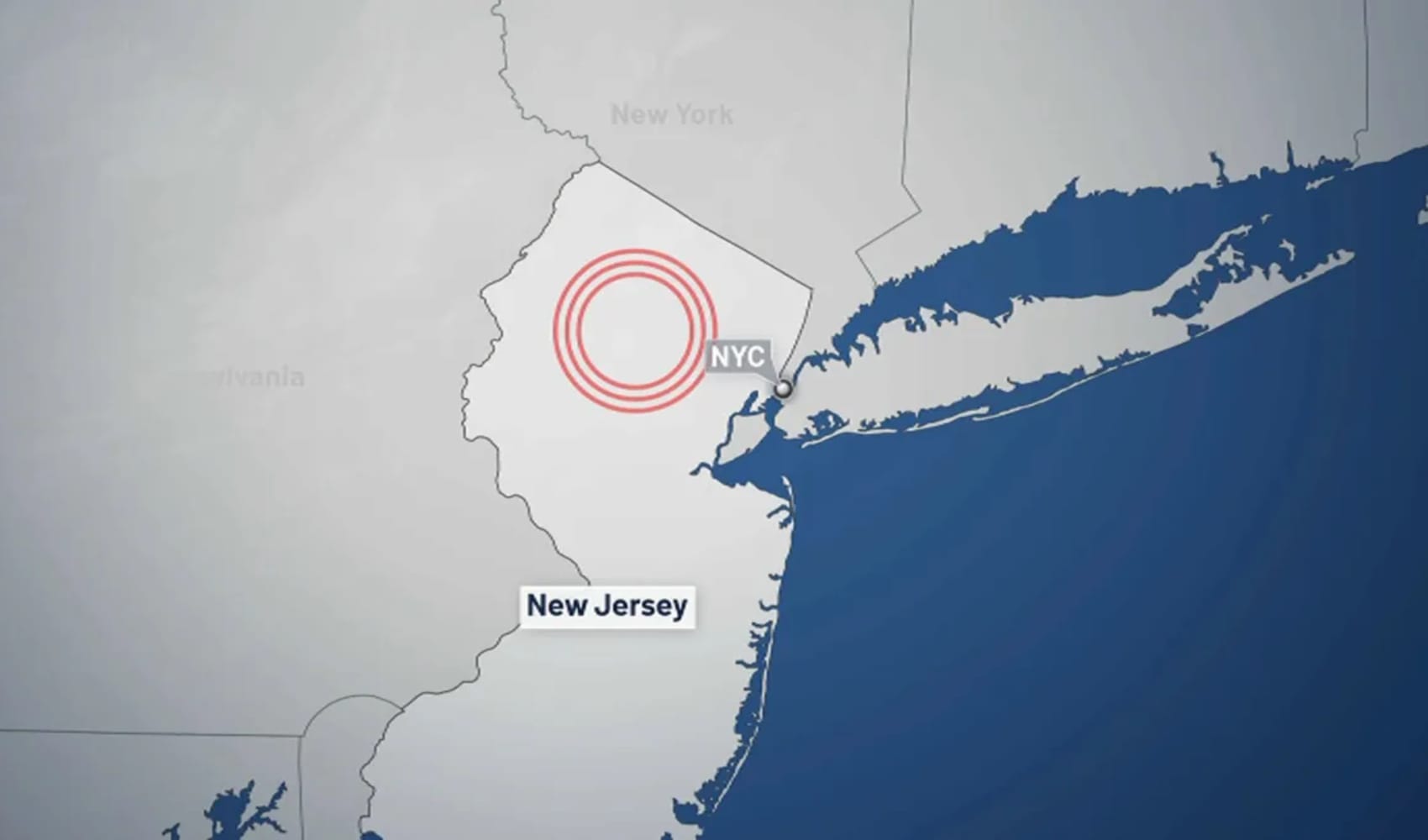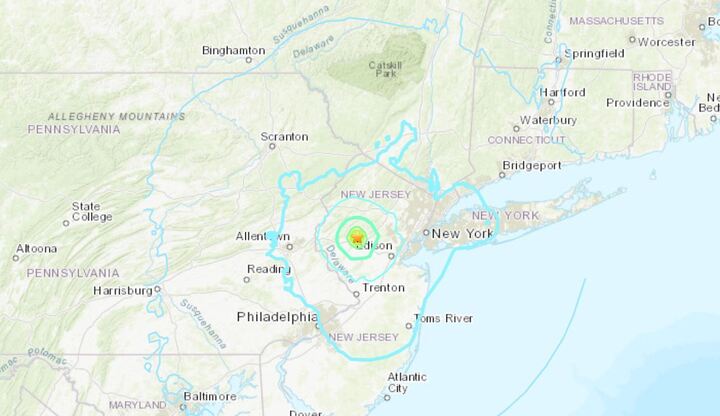What to Know
- The East Coast earthquake briefly snarled travel by air, road and rail around the region.
- Friday's quake was centered in northern New Jersey and registered a magnitude of 4.8. It shook skyscrapers and suburbs across the northeastern U.S. for several seconds.
- It caused no major damage, but startled millions of people in an area unaccustomed to such tremors.
A magnitude 4.8 earthquake centered in Hunterdon County, New Jersey, sent tremors throughout the Northeast United States, including Philadelphia, Friday.
The April 5, 2024, earthquake caused people from Baltimore to the Massachusetts-New Hampshire border to text and call friends and family members to ask if they felt it?
Get top local stories in Philly delivered to you every morning. Sign up for NBC Philadelphia's News Headlines newsletter.
As people talked about the shakes, questions arose about how this happened and how often it occurs?
Here's some answers to those questions:
Where was the magnitude 4.8 quake centered?
The U.S. Geological Survey reported a quake at 10:23 a.m. with a preliminary magnitude of 4.8, centered near Whitehouse Station, New Jersey, or about 45 miles west of New York City and 50 miles north of Philadelphia.
Potentially how many people felt the April 5, 2024 earthquake?
USGS's figures indicated that over 42 million people might have felt the rumbling. People reported feeling it throughout much of the Northeast United States.
How often does this happen along the Northeastern U.S.?
"Nearly 75 percent of the U.S. could experience damaging earthquake shaking, including the possibility of damaging earthquakes along the northeastern United States," the USGS notes.
Earthquakes are less common on the eastern than western edges of the U.S. because the East Coast does not lie on a boundary of tectonic plates. The biggest Eastern quakes usually occur along the mid-Atlantic Ridge, which extends through Iceland and the Atlantic Ocean.
Quakes on the East Coast can still pack a punch, as its rocks are better than their western counterparts at spreading earthquake energy across long distances.
“If we had the same magnitude quake in California, it probably wouldn’t be felt nearly as far away,” USGS geophysicist Paul Caruso said.
A 4.8-magnitude quake isn't large enough to cause damage, except for some minor effects near the epicenter, the agency said.
Robert Thorson, a University of Connecticut earth sciences professor, said the quake resulted from the constant compression of the earth's hard, brittle crust in New Jersey.
“It’s like having a big block of ice in a vise, and you are just slowly cranking up the vise,” he said. Eventually, you’re going to get some crackling on it.”
When was the last time a quake of this magnitude rattled the East Coast?
This was one of the larger quakes we've experienced in the Northeast in recent years, Delaware Geological Survey Director David Wunsch told NBC10. Included was a magnitude 4.2 quake centered in Delaware in 2017.
Wunsch said that quakes in the Northeast occur "somewhat randomly here in the Northeast" as the earth's crust shifts over long periods of time.
Friday's quake stirred memories of the Aug. 23, 2011, earthquake that jolted tens of millions of people from Georgia to Canada. With an epicenter in Virginia, it left cracks in the Washington Monument and rattled New Yorkers ahead of the 10th anniversary of the Sept. 11 terror attacks.
Registering magnitude 5.8, the 2011 quake was the strongest earthquake to hit the East Coast since World War II.
When have other quakes hit between Pennsylvania and New York?
Earthquakes with magnitudes near or above 5 struck near New York City in 1737, 1783 and 1884, the USGS said.
The 1737 quake was felt as far away as Delaware, according to the USGS.
"Since 1800, when two earthquakes (March 17 and November 29) were reported as 'severe' at Philadelphia, 16 tremors of intensity V or greater (Modified Mercalli Scale) have originated within the State," a 1976 USGS study found.
Sign up for our Breaking newsletter to get the most urgent news stories in your inbox.




